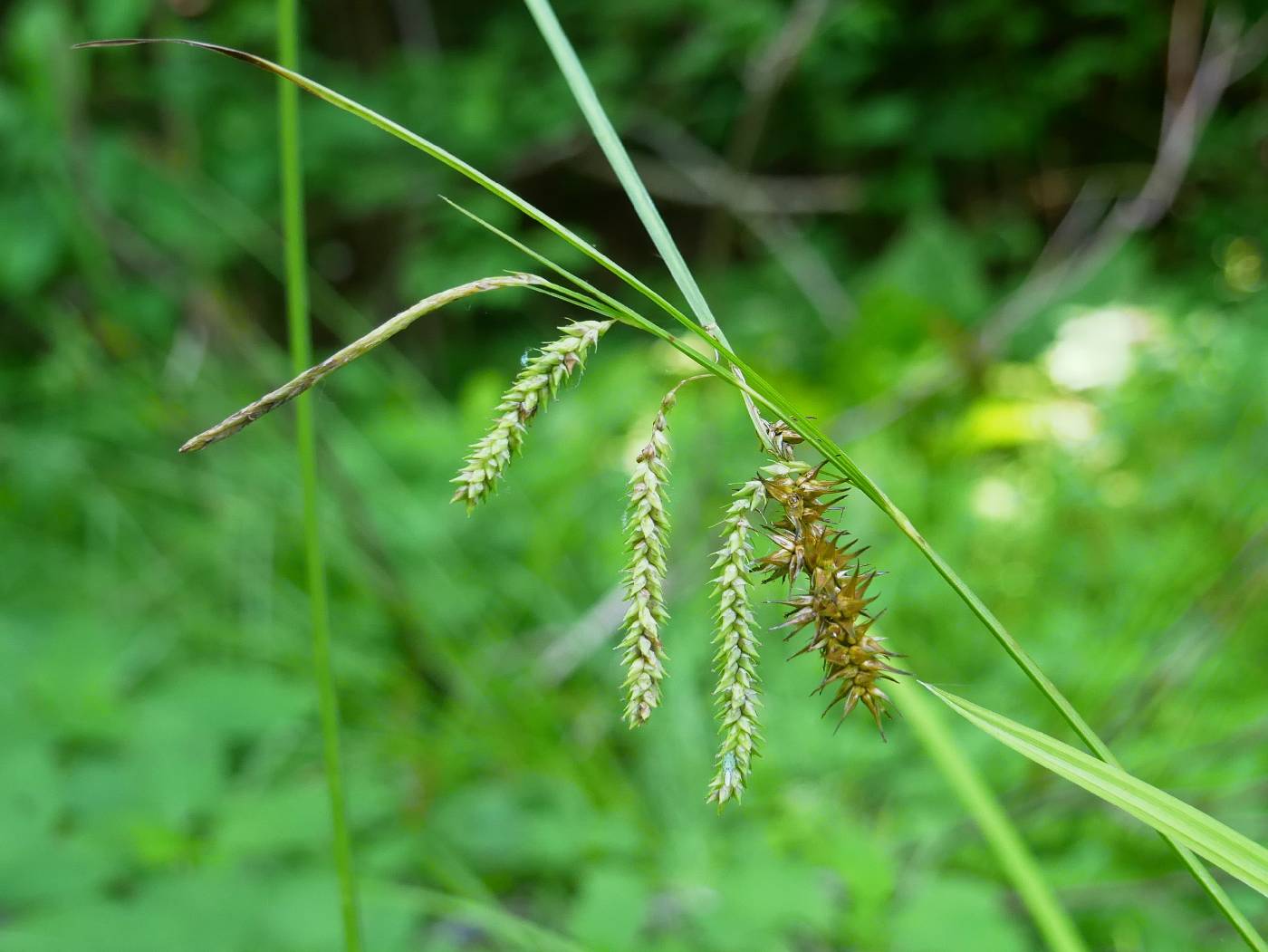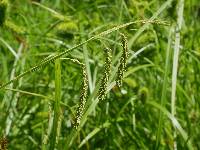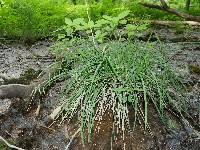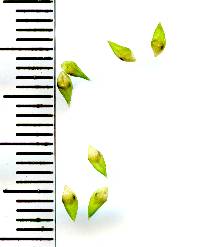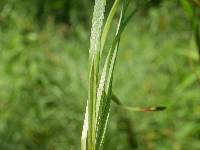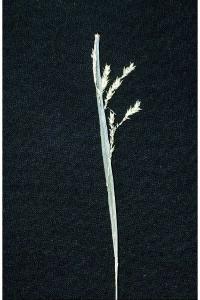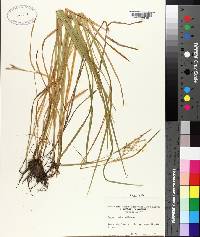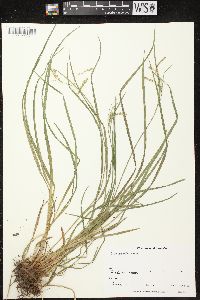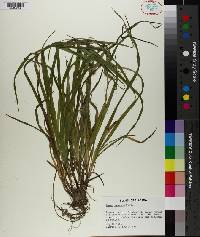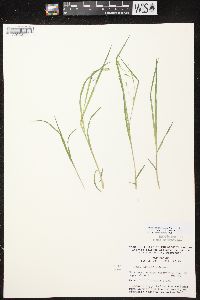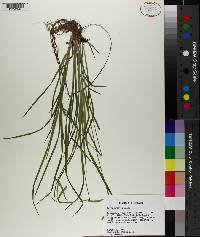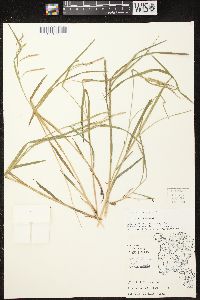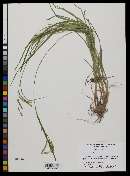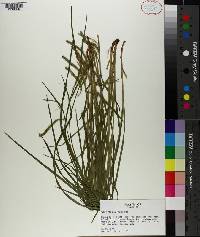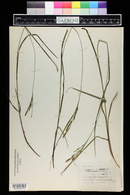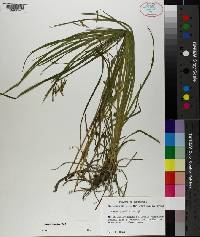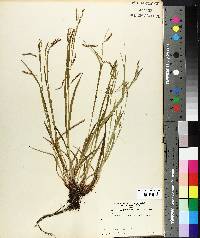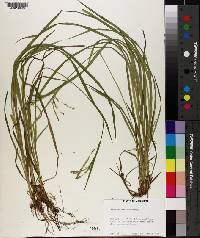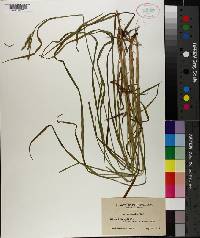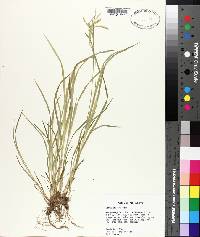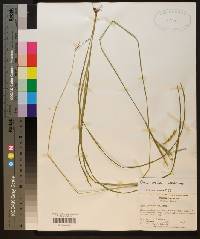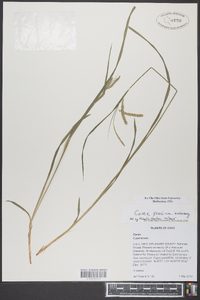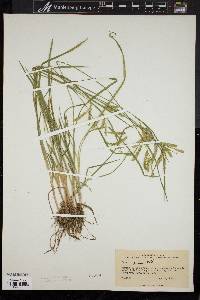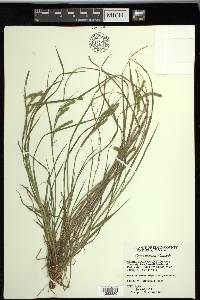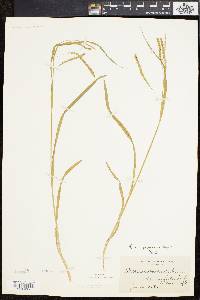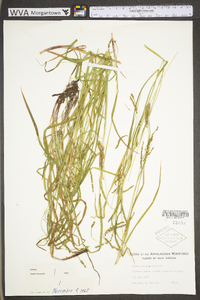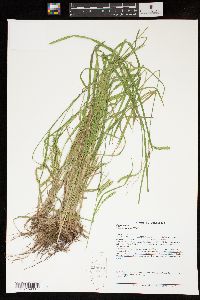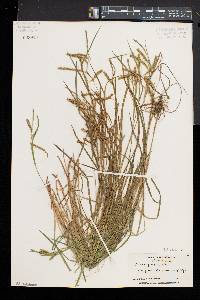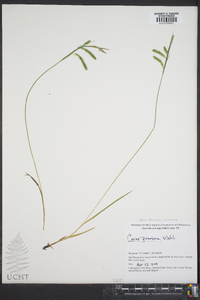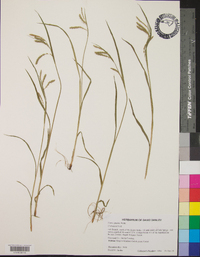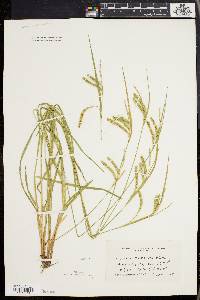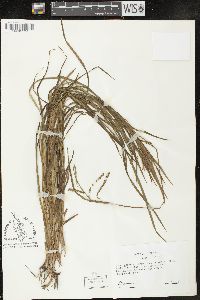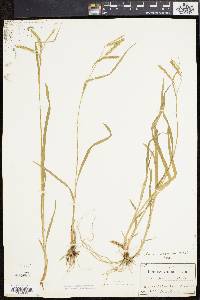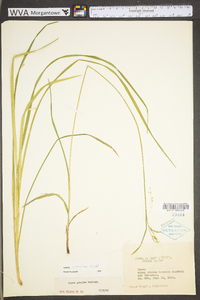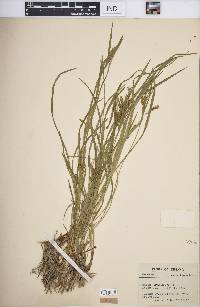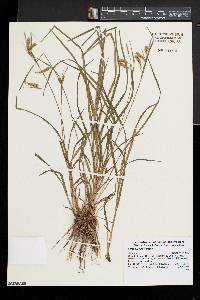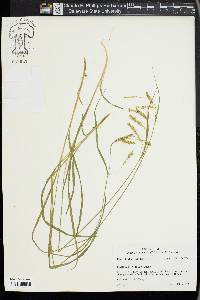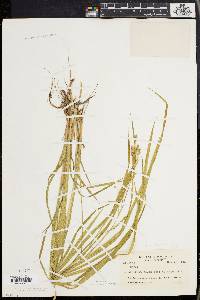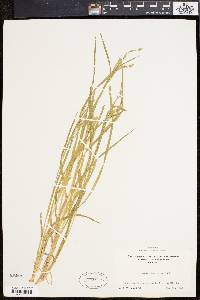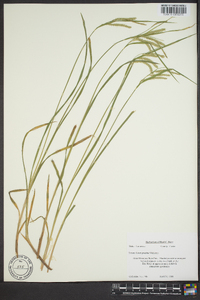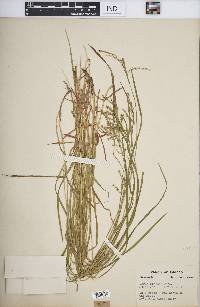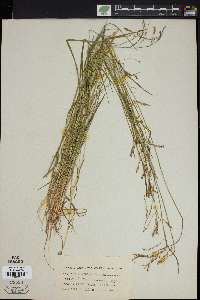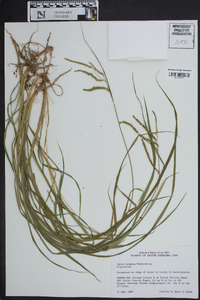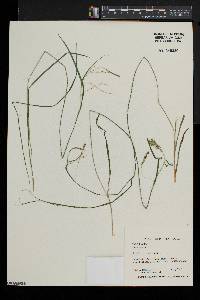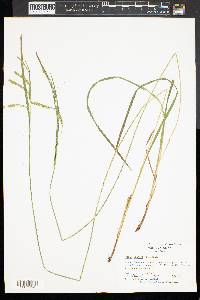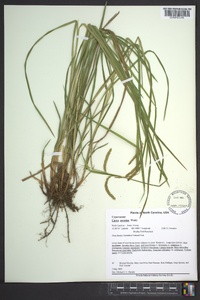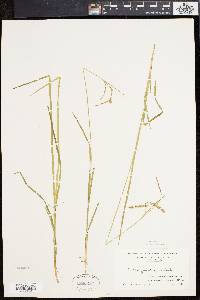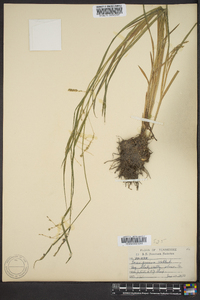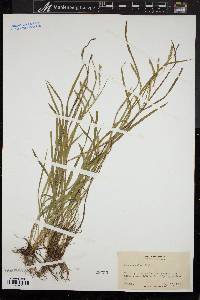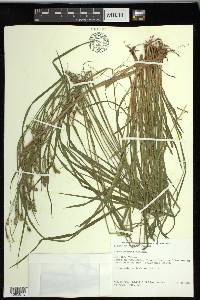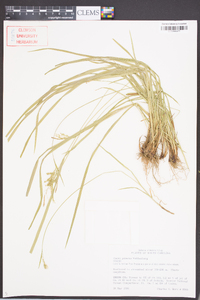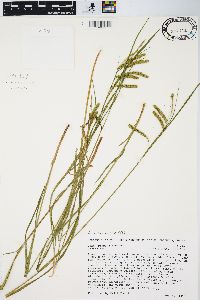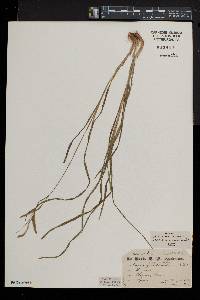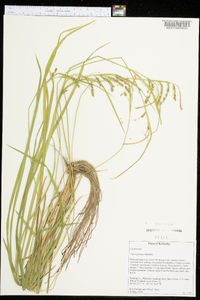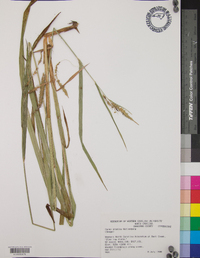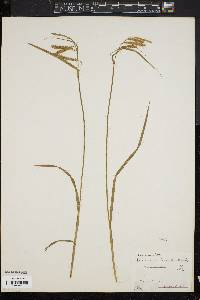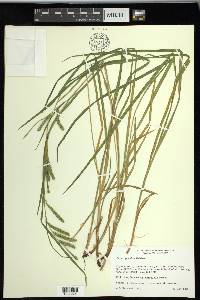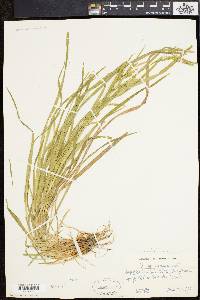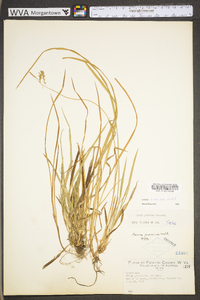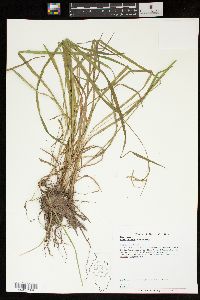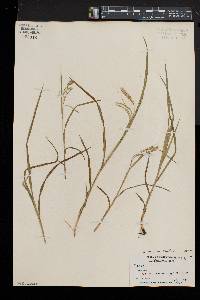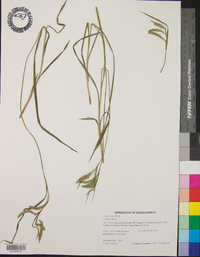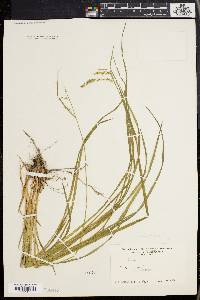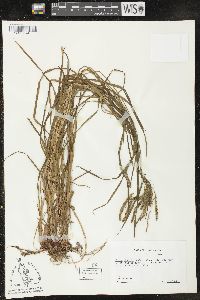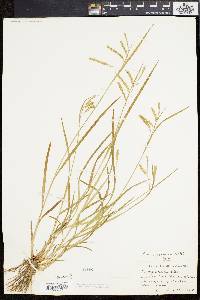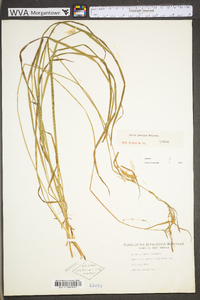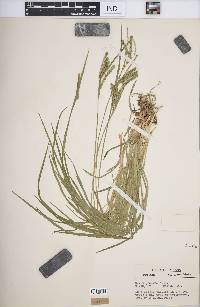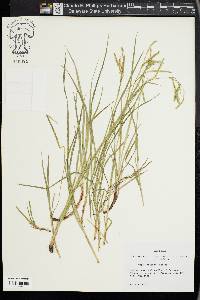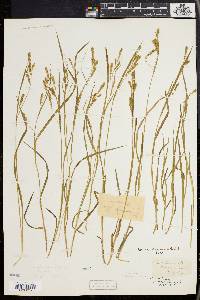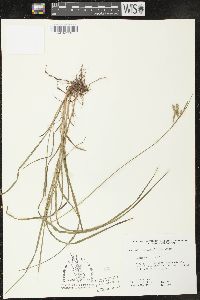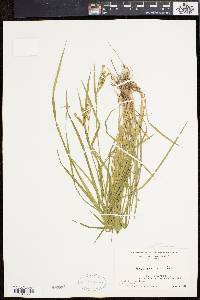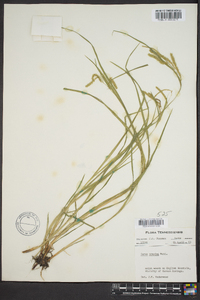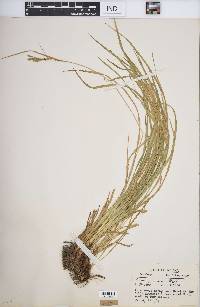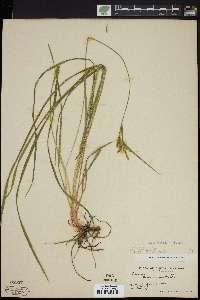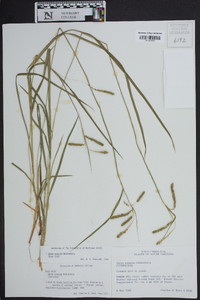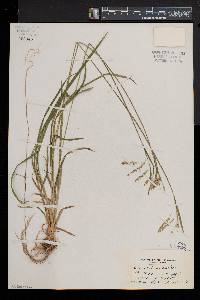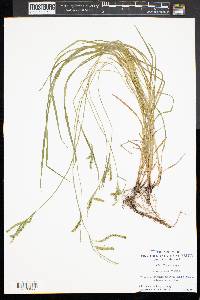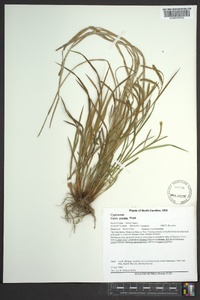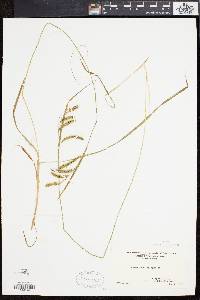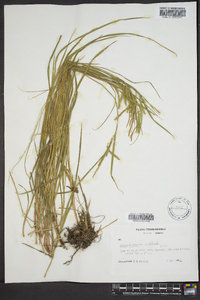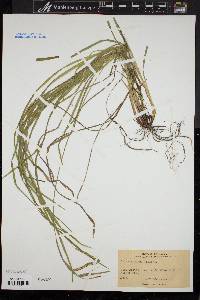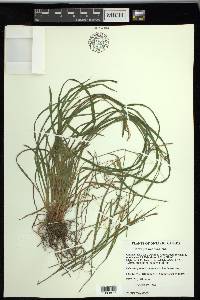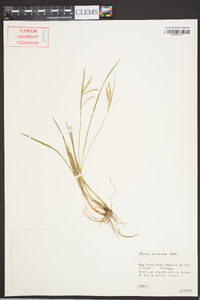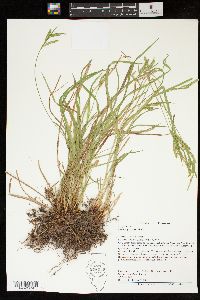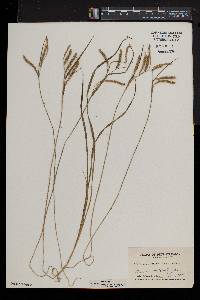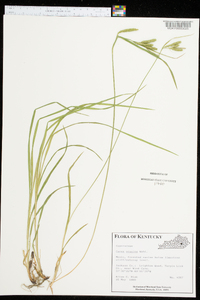Carex prasina
|
|
|
|
Family: Cyperaceae
Drooping Sedge
[Carex miliacea] |
Plants densely cespitose. Culms green or slightly suffused with maroon at base; flowering stems 30-80 cm, usually longer than leaves at maturity, 0.8-1.1 mm thick, glabrous but finely scabrous on angles within inflorescence. Leaves: basal sheaths 2-3, green or tinged with maroon, bladeless, very short or absent, glabrous; others green on back, white-hyaline on front; blades flat, 2-5 mm wide, glabrous. Inflorescences: peduncles of lateral spikes slender, to 4 cm, mostly shorter and usually shorter than spikes, glabrous; peduncle of terminal spike less than 10 mm, minutely scabrous; proximal bracts equaling or exceeding inflorescences; sheaths less than 3 mm; blades 2-3 mm wide. Lateral spikes 2-4, 1 per node, each overlapping 1 above, uncrowded, nodding or drooping at maturity, pistillate with 25-50 perigynia, narrowly cylindric but broader and more densely flowered at distal end (flowers 1 mm apart) than proximal end (flowers 3.5 mm apart), 15-60 × 3.5-5.5 mm. Terminal spike staminate or gynecandrous with a few pistillate flowers distally, 25-40 × 2.5-4 mm. Pistillate scales white-hyaline with broad green midrib, ovate-oblong, shorter than mature perigynia, apex cuspidate or with green awn about as long as body of scales, scabrous at tip, otherwise glabrous. Perigynia green to golden green at maturity, strongly 2-ribbed but otherwise veinless or nearly so, loosely enveloping achene, lance-ovoid, 2.5-4 × 1-1.5 mm, membranous, base with short stipe, apex tapering to flattened, often bent beak, glabrous; beak 1-1.5 mm, with minute hyaline teeth. Achenes substipitate, 1.3-2 × 1-1.2 mm. 2n = 60. Fruiting late spring-mid summer. Rich, mesic deciduous forests, often along streams or in seepage areas, or in moist low ground associated with springs or fens; Ont., Que.; Ala., Ark., Conn., Del., D.C., Ga., Ill., Ind., Ky., Maine, Md., Mass., Mich., Miss., Mo., N.H., N.J., N.Y., N.C., Ohio, Pa., R.I., S.C., Tenn., Vt., Va., W.Va., Wis. Specimens of apparent hybrids between Carex prasina and C. crinita are known from New Jersey and West Virginia, but their parentage has not been confirmed. The compact growth form and attractive bluish green foliage in early summer make the taxon an ideal plant for cultivation near a shady pond or stream.
Tufted, 3-8 dm, brown or greenish at base; main lvs 3-5 mm wide; sheaths glabrous; terminal spike staminate or with a few apical perigynia; pistillate spikes 2-4, widely separated, cylindric, 2-5 cm, 5 mm thick, curved or nodding, the lower on long peduncles, the upper on much shorter ones; upper bract sheathless or nearly so; pistillate scales ovate to obovate-oblong, shorter than the perigynia, mucronate or short-cuspidate; perigynia 2.9-4.2 mm, rhombic-ovoid, trigonous, sharply angled at the prominent lateral ribs, obtusely angled on the back, otherwise essentially nerveless, tapering to an acute, at first nearly flat, later trigonous beak; achene concavely trigonous. Moist or wet woods and streambanks; Que. and Me. to Mich., s. to S.C., Ga., and Ala. Gleason, Henry A. & Cronquist, Arthur J. 1991. Manual of vascular plants of northeastern United States and adjacent Canada. lxxv + 910 pp. ©The New York Botanical Garden. All rights reserved. Used by permission. From Flora of Indiana (1940) by Charles C. Deam Infrequent, becoming frequent in the southeastern counties. A species of very wet or springy habitats in deep woods, growing generally along streamlets and frequently on bars and rocks in streams. ...... Indiana Coefficient of Conservatism: C = 10 Wetland Indicator Status: OBL |

